Pssssssssssssssssssssssssssssssst
Before
B O A R D I N G
CHECK IN
Who Cares - What Matters
DO UNTO OTHERS AS YOU’D LIKE TO BE DONE UNTO YOU. . .RIGHT
Or better,
DO UNTO OTHERS AS THEY REALLY WANT DONE UNTO THEM. . .
I mean these are really great aspirations for yourself
FOR OTHERS
. . .or are they the worst?
it’s real close to liking you to break open the
Butterfly Cocoon
before it’s ready
. . .seemingly to make it easier
But actually doing it the most harm ever. . .
THE SAVIOR COMPLEX
I’ve always had one
and thought it noble
and even sometimes wore it as a
Badge of Honor
until I saw I was actually doing more harm
than any kind of well intended
G O O D
so when an article about SAVIOR COMPLEXING comes across my attention
I SOAK IT UP
and ok, fine, here’s the truest of true Confessions:
I end up making this Complex even more
C O M P L E X I N G
and yet, I read on and invite you to do the same now with this article from a recent Psychology Today by Mark Travers, Ph.D., an American psychologist with degrees from Cornell University and the University of Colorado Boulder.

Everyone. . .
Dr. Travers shares that many people come to therapy troubled by their inability to help someone in need. They may say things like:
If you relate to any of these questions, you may have a savior complex. At first glance, your behaviors might point to your helpful nature. But, when examined more closely, your savior complex can be psychologically unhealthy as it can give you an external outlet to focus on instead of addressing your own problems.
Helpfulness is a valued and pro-social trait, but there is a difference between helping and saving. A savior complex goes beyond our ability to help people, crossing into the realm of trying to be a hero in someone else’s life for your benefit more than theirs.
Here I’ll talk about three ways you can manage your instinct to want to “save” people.
When people confide in you, they are often looking for an outlet to let out pent-up emotions instead of wanting to “be fixed.” A big problem for many “saviors” is the mistaken assumption that people are incapable of solving their own issues. If you take up the practice of listening more actively, you may learn that this person is perhaps just looking for a supportive shoulder and someone who will listen.
A study published in the Journal of Positive Psychology finds that listening carefully and attentively increases the level of humility in any conversation, resulting in a positive feedback loop of increased humility and better listening.
Here are two ways to up your listening skills, according to the researchers:
Aside from practicing active listening, resist your urge to intervene. You may find that people can often come to their own aid when helping themselves is the only real way out.
If you try to be the fixer of all their problems, you run the risk of unintentionally pushing them towards a sense of learned helplessness, where they lose the perspective to be able to diagnose and address their own issues.
When a loved one comes to you with an issue, refrain from offering assistance or suggestions right off the bat. Remind yourself that you can be present for someone without having to rescue them. Instead, you can offer validation that shows that you understand and empathize with them and are there for them whenever they need to vent.
One key aspect of the savior complex is the ingrained desire to help even when it’s not wanted or requested. Assuming that the other person is incapable of helping themselves may reflect or be perceived as a superiority complex on your end.
Instead, you can offer assistance in low-pressure ways that keeps the ball in their court. For instance, ask the other person questions like, “This situation seems quite tough. Is there any way I can help?”
Follow their guidance if they ask you to help in a certain way instead of assuming that you know what’s best.
Managing your savior instincts may seem difficult at first, but it’s a learnable skill. Even though you may believe you are doing someone a favor, saving someone who doesn’t want to be saved may backfire. Wait until this person asks for your assistance since it’s likely that someone who truly needs it will ask you for it directly.
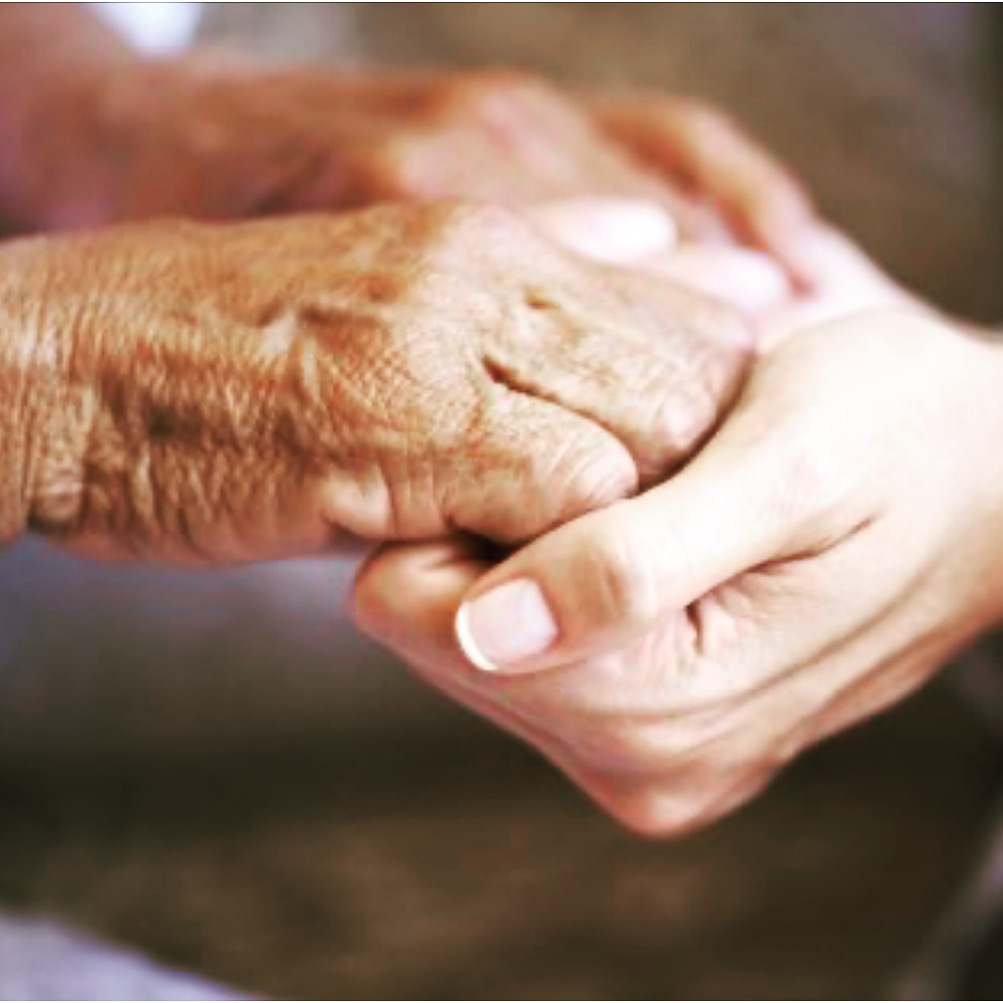 And remember
And remember
Even as you’re Reaching Out
To REACH IN
f i r s t
IS THIS HELPING THEM
MORE THAN
APPEASING ME. . . ?
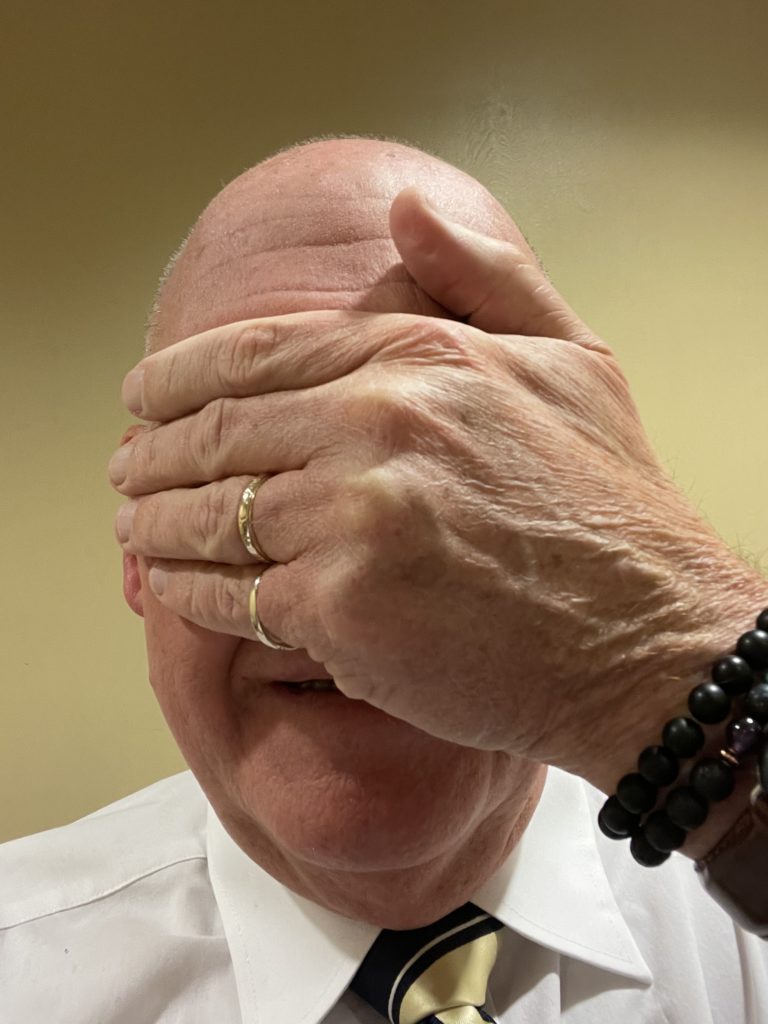
Give MORE and take less. . .
Can we. . . ?
THEY SAY:
Giving to others brings a sense of satisfaction and fulfillment that cannot be achieved through material possessions or personal gain. It can also have positive effects on our mental and physical #health. Research has shown that people who regularly engage in acts of kindness and giving are more likely to experience lower levels of stress, depression, and anxiety. . .
S T I L L
In this for real
DOG eat Dog
world
we can still see how
We Mutts can still learn
(or forever RE-LEARN)
New Tricks
without so much as
ROLLING OVER
or worse
PLAYING DEAD

IT IS A SUPER POWER
and we all possess it
but don’t always access it
P R E S E N C E
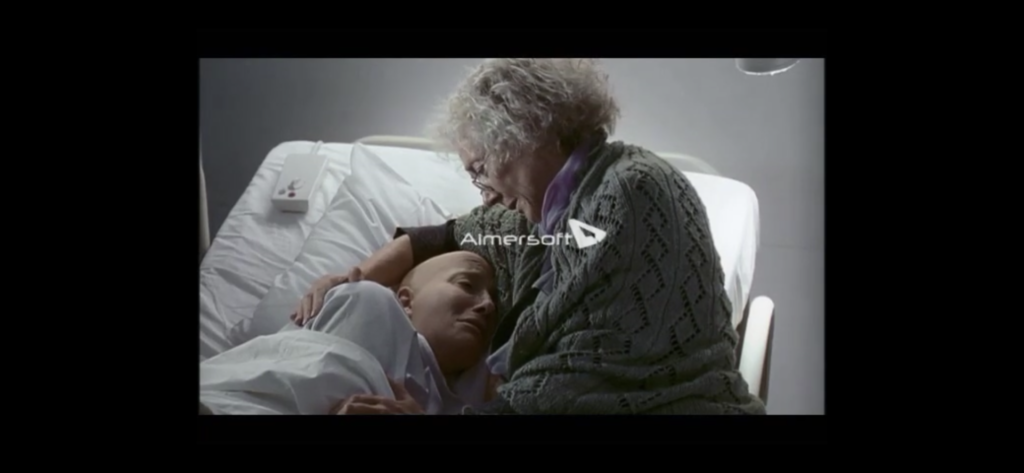 Some call it:
Some call it:
HOLDING SPACE
and I’ve blogged on it before
but as a striving to always be better
CARING CATALYST
I can’t learn enough about it
or dare to believe
I’ve always provided it
to my utmost ability
. . .and then this article from
TIME MAGAZINE
found me:
Behind Felt Presences
Many of us have had this uncanny feeling before: Entering a silent room, walking through a dark night, or waking from sleep—and suddenly, it’s there. A sense that someone is with us, without any sight or sound. A feeling of a presence.
It’s a sensation that occupied the forefathers of psychology for a long time, including William James. Writing in the Varieties of Religious Experience, James wrote of “a feeling of objective presence, a perception of what we may call ‘something there,’ more deep and more general than any of the special and particular ‘senses.’” It was an experience he recognized as key to many a spiritual occurrence, but also one with an often sinister and foreboding air. A friend of James’ recounted a night-time encounter of his own that he experienced as a student: “I did not recognize it by any ordinary sense and yet there was a horribly unpleasant ‘sensation’ connected with it. It stirred something more at the roots of my being than any ordinary perception.”
If you’ve had this experience and you’ve tried to explain it to someone, you may be met with a blank look, or even skepticism. It sounds like something out of a ghost story, and indeed, William James was a kind of 19th-century ghostbuster. He was a key member of the Society of Psychical Research, which was set up to examine the truth behind telepathy, spiritualism, and apparitions of the night.
But what we now know is that James’s friend was correct. This isn’t a ghost story, or even a sixth sense, but something at the roots of our being. Contemporary neurology, cognitive neuroscience, and psychiatry shows us that such presences truly belong to us because they are linked to how our bodies and minds give us a sense of self.
The first piece of evidence comes from case studies of people affected by epilepsy, brain tumors, and other major changes to brain functioning. For instance, in a 2006 study, a 41-year-old man, whom the study called “PH,” presented to a hospital clinic complaining of fatigue, dizziness, and seizures. The one night in hospital, he awoke to feel he had split into three parts: his left side, which felt normal; his right side, which felt somehow detached; and then off to his right, another man who wasn’t him. This figure mirrored his body position, and when he tried to look at him, he looked away; PH felt as if “they shared the same soul.” Beyond the man stood a woman, again mirroring PH, and beyond that, some girls; he called them his “family.” After a few days the image of these figures receded, but the feeling of their presence remained.
PH’s experiences were the product of an aggressive tumor in the left hemisphere of his brain, which affected two areas in particular: the posterior insula and the temporoparietal junction. The former is a key brain area for processing internal information about our bodies (like heart rate or gut feelings), while the latter is involved in integrating our senses to make a map of where we are in space. Damage to those areas would have changed PH’s internal model for where he felt his body was. So when he was visited by this presence, in a way it did share his soul. It was where he should have been (or his brain thought he was).
The next piece of evidence comes from cognitive neuroscience, and a team led by neurologist Olaf Blanke in Geneva. Since 2014, they have used a robot to induce feelings of presence in healthy individuals and clinical disorders, such as Parkinson’s disease. The robot works to disrupt your sensory expectations: Whenever we make a movement, our brains are thought to make a set of predictions about what will happen to our senses. Go to clap your hands, and your brain is ready for a new sight and sound, all at the right time. But if you mess with that, strange things start to happen; things don’t feel like “us” and instead start to feel like they belong to someone else. With the presence robot, you make random pressing movements into the air in front of you, while the robot presses you in the back at exactly the same time. In sync, it almost feels like it’s you pressing your own back—you brain takes the cues from your own movements, and the sensations on your back, and comes to the conclusion that the only person in this process is you. But when the touches start to then go out of sync—slowing and dragging, not quite hitting where they should—participants suddenly feel like a person, not just a robot, is controlling the touches from behind. Lots of people with Parkinson’s have feelings of presence as part of the condition, and this makes them particularly susceptible to the phantom touches of the robot.
Lastly, we’re now beginning to recognize that feelings of presence are a missing piece in the story of psychosis. Not long after William James was writing, figures like Karl Jaspers were describing examples of presence in some of the first textbooks of psychiatry. But the trail ran cold for a number of years—until very recently. There’s now evidence that people who hear voices (or have auditory hallucinations) also describe high rates of felt presence—literally voices than can be there without speaking. And grassroots work such as Rethink Psychosis, led by people with experience of psychosis themselves, are calling for more recognition and understanding of the phenomenon through projects like “Psychosis Outside the Box,” a collection of the more neglected and unusual aspects of psychosis.
The strangeness of presences makes them all too easy to miss in a time-pressured doctor’s appointment, but for many people, it may be the figure behind voices or visions that matters the most. If you’ve ever had your own personal space violated, or dreaded to go into certain places because of who might be there, you will know how much the presence of another can affect you, even without a word being uttered. Thinking about presences, and not just voices, poses a whole new set of challenges for our scientific models of psychosis and how we deliver psychotherapy. It’s even part of some of the newer psychotherapeutic approaches to psychosis, such as AVATAR therapy.
The through-line in all these examples is the self. In Western societies, we are used to the idea of a unitary, consistent self—the core of us that never changes. But psychologists and neuroscientists know that the self is something that can be disrupted in multiple ways; it’s less of a one-man band, and more of an ensemble piece. In clinical disorders, case reports, or through ingenious experiments, we can observed how radically the self can altered to produce a presence.
It goes beyond that, too. Given the right conditions, all of us could have this is experience, whether as a result of grief, exhaustion, trauma, or even sleep problems. In this way, the new science of presence isn’t about a mysterious “other,” after all. It’s a way of learning about ourselves.
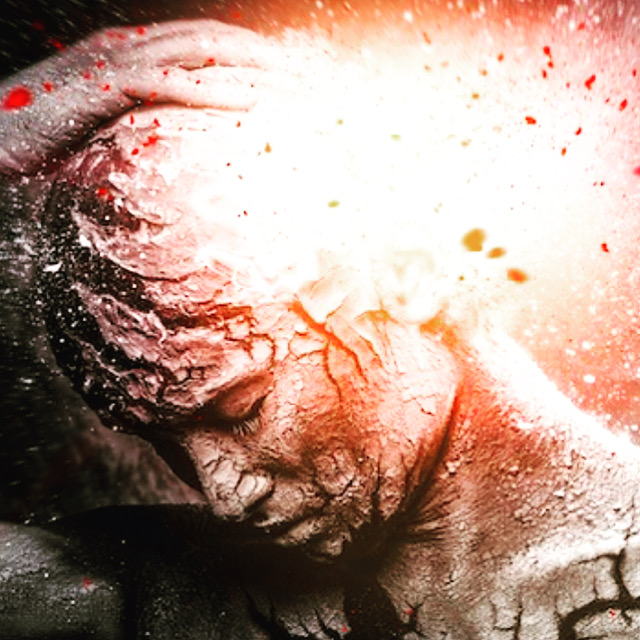 W H O A, Right
W H O A, Right
And yet the not-so-big-surprise
WE ARE LIKE OCEANS. . .
THERE IS SO MUCH WE KNOW ABOUT EACH OTHER
AND SO VERY, VERY MUCH MORE THAT WE DON’T. . .
with the biggest question of
JUST HOW WILLING ARE YOU TO FIND OUT?
Psssssssssssssssssssssssssssst:
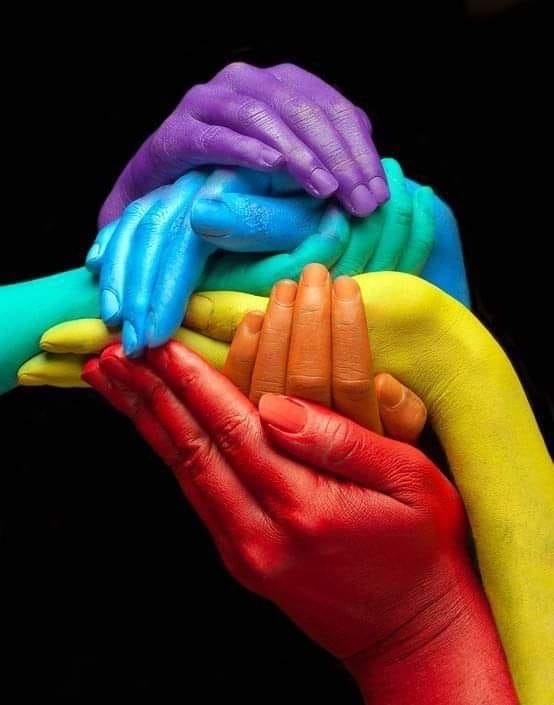 FIND OUT
FIND OUT
Gillian is a seven-year-old girl who cannot sit in school. She continually gets up, gets distracted, flies with thoughts, and doesn’t follow lessons. Her teachers worry about her, punish her, scold her, reward the few times that she is attentive, but nothing. Gillian does not know how to sit and cannot be attentive.
When she comes home, her mother punishes her too. So not only does she Gillian have bad grades and punishment at school, but she also suffers from them at home.
One day, Gillian’s mother is called to school. The lady, sad as someone waiting for bad news, takes her hand and goes to the interview room. The teachers speak of illness, of an obvious disorder. Maybe it’s hyperactivity or maybe she needs a medication.
During the interview an old teacher arrives who knows the little girl. He asks all the adults, mother and colleagues, to follow him into an adjoining room from where she can still be seen. As he leaves, he tells Gillian that they will be back soon and turns on an old radio with music.
As the girl is alone in the room, she immediately gets up and begins to move up and down chasing the music in the air with her feet and her heart. The teacher smiles as the colleagues and the mother look at him between confusion and compassion, as is often done with the old. So he says:
“See? Gillian is not sick, Gillian is a dancer!”
He recommends that her mother take her to a dance class and that her colleagues make her dance from time to time. She attends her first lesson and when she gets home she tells her mother:
“Everyone is like me, no one can sit there!”
In 1981, after a career as a dancer, opening her own dance academy and receiving international recognition for her art, Gillian Lynne became the choreographer of the musical “Cats.”
Hopefully all “different” children find adults capable of welcoming them for who they are and not for what they lack.Long live the differences, the little black sheep and the misunderstood. They are the ones who create beauty in this world.
 THE MORAL OF THE STORY:
THE MORAL OF THE STORY:
THE NEXT TIME YOU ARE TOLD TO Shhhhhhhhhhhhh AND SIT STILL. . .
D
O
N
‘
T
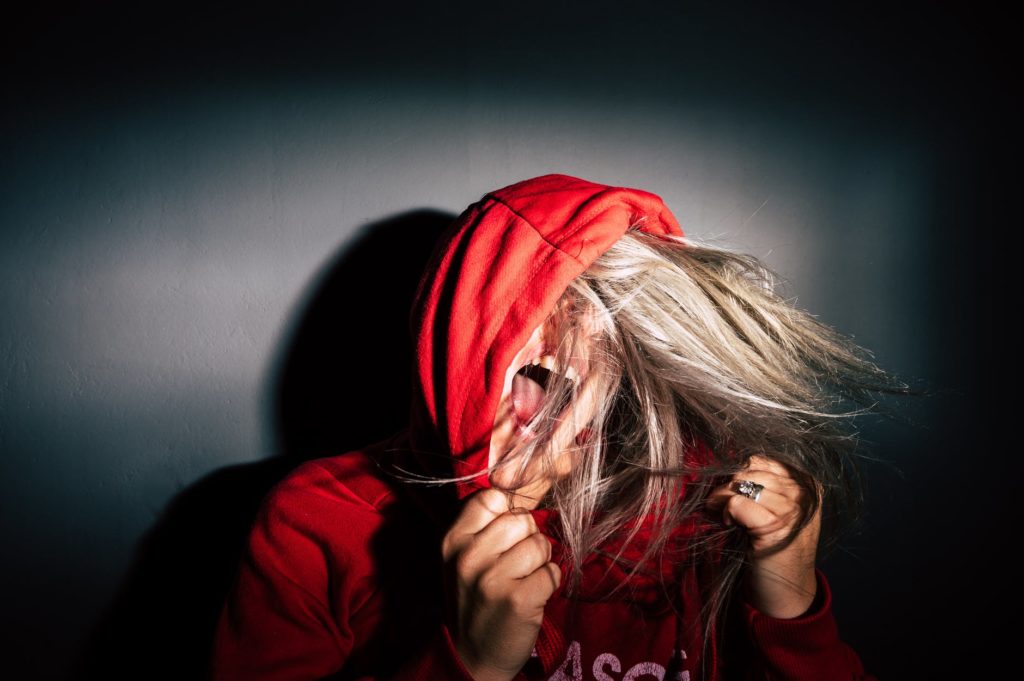
Photo by Jan Kopřiva on Pexels.com
YOU BLEW IT
YOU KNEW IT
DON’T CHEW IT
JUST DO IT. . .
SAY
“I AM SORRY”
. . but how. . .
(when just one way doesn’t feel enough)
Apologies are how we smooth over conflicts and repair relationships, prove our character to others, and coexist as imperfect beings. Yet few of us know how to do it well—or have the bravery to do so.
“A good apology builds bridges. It heals wounds,” says Marjorie Ingall, coauthor of the new book Sorry, Sorry, Sorry: The Case for Good Apologies. “It’s also really hard. Apologizing is a courageous act, because we’re overcoming all of our own animal instincts and all of our own self-protectiveness when we do it.”
Sincere apologies can be difficult to nail. Everyone wants to feel like a good person, which can lead to defensiveness—we talk ourselves out of the idea that we did something wrong in order to safeguard our sense of self. “We immediately turn to excuses, justifications, reasons why the victim provoked us,” says Karina Schumann, an associate professor of psychology at the University of Pittsburgh who’s researched the barriers to apologizing. “And if we’re able to convince ourselves of that, then that can—in our minds—preclude the need for an apology.” Or, perhaps we don’t care enough about fixing a certain relationship to apologize, she adds. We might also overestimate how uncomfortable delivering the apology will be, or assume that it won’t work.
But sincere apologies bring a host of benefits to the person delivering the message and the one receiving it. They help solidify relationships and mend trust, both of which can lower stress and improve mental health. “It’s really unhealthy to hold onto shame and guilt and not try to work through your emotions around negative behaviors and harmful acts you’ve committed,” Schumann says. Plus, some research indicates that those receiving apologies can experience improvements in blood pressure and heart rate, as well as increased activation of empathy-related brain regions that set the stage for forgiveness and reconciliation.
If you’re ready for your mea culpa moment, here are eight keys to apologizing well.
Apologies are better late than early, says Cindy Frantz, a social psychologist at Oberlin College who has researched how timing influences apology effectiveness. “What we found is that there can be a temptation to offer an apology quickly,” she says. “It’s an effort to shut the whole incident down and move on. And that benefits the perpetrator, but it doesn’t meet the needs of the victim.”
You can’t deliver an effective apology until and unless the injured party believes that you fully understand what you did wrong, she says. “If the apology comes before that, it’s not going to be seen as sincere.”
If you’re dealing with a relatively minor offense, consider apologizing over text message or in person, Ingall suggests. Emails often work well for more serious situations. “And if you really screwed up, there’s something very powerful about a stamp and nice stationery and a pen,” she says. Just don’t issue your apology via social media, which can be humiliating for everyone involved.
Another rule of thumb: “When you’re apologizing to someone, you have to give them an out,” Ingall says. “You don’t want somebody to feel trapped by you—they need an escape route.” Don’t block the pathway out of someone’s work cubicle, for instance, or lean into their car window so they’re unable to pull away.
Use the words “I’m sorry” or “I apologize.” Opting instead for phrases like “I regret” or “I feel bad about what happened” often results in non-apologies, which “have the vague contours of an apology, but don’t actually get there,” Ingall says. (See: The classic “sorry if you were offended” or “sorry, but…” approaches.) Plus, saying you regret something puts the focus on you and your emotions, when it needs to center squarely on the wronged person’s feelings.
Why should you apologize if you’re both at fault? That’s exactly the question many people struggle with, Schumann says—and certainly, there often is dual-responsibility. “But I like to encourage people to really focus on taking responsibility for the parts of the conflict that they’re responsible for,” she says. Avoid the urge to phrase it as, “I’m sorry I did this, but you also did that.” The inclination to do so is “normal, because we want to contextualize our behavior and call attention to the fact that we’re also hurt,” she says. But save it for later on in the conversation.
Always choose your words carefully when apologizing, advises Lisa Leopold, an associate professor of English language studies at the Middlebury Institute of International Studies at Monterey who has analyzed the language of public apologies. Avoid conditional phrases, like “if” or “may”—as in, “I’m sorry if anyone was offended,” which suggests that perhaps there were no victims. “But” is another misstep. It undercuts your message, she notes.
It’s crucial to use “I” or “my” while apologizing, Leopold adds. For example, say “I’m sorry for my outburst,” rather than “I’m sorry for the interaction this morning.” And always use the active voice. “If you say something like, ‘I apologize for what happened,’ well, ‘what happened’ is something you have no control over,” she says.
It can also be helpful to utilize intensifiers such as “very,” “truly,” “sincerely,” “deeply,” and “extremely.” These can “enhance the language of an apology,” Leopold notes.
One of the core elements of an apology is making reparations. Sometimes, Schumann says, that will be possible in a direct way: You broke their favorite wine glass? Buy them a new one. Spilled coffee on their dress? Pay for the dry-cleaning.
If that’s not feasible, consider more symbolic forms of repair. For example, if you hurt someone’s feelings with a critical comment, make it clear that you misspoke. “Sometimes you can’t repair what’s happened, but you can think about the relationship moving forward,” she says. “How can you communicate a promise to behave better?” It’s important for the other person “to hear that this is not going to continue…and they can trust you to improve your behavior in the future.”
A variety of things can help make it clear your words are coming from the heart, Schumann says. First, the apology should match the severity of the offense. If you’re apologizing for infidelity and say, “Sorry about that, love,” you won’t come across as very genuine, she notes; however, those words might be adequate if you’re 10 minutes late for dinner.
You should also aim to put yourself in the other person’s shoes and convey that you understand what you did was hurtful to them, and the consequences they dealt with as a result. It can be helpful to listen first and ask them questions about their vantage point, Schumann advises. “That might allow you to really understand what they’re going through, and therefore be able to offer a more authentic, victim-focused apology.”
An apology is a starting point. Particularly with severe offenses, the person wronged will often need time and space to heal, and it’s important not to pressure them. It can be tempting to follow up with something like, “What’s wrong? I apologized—how long are you going to hold onto this?” Instead, Schumann suggests checking in like this: “I understand this isn’t going to fix everything, and I want to continue to do whatever I can to make this right by you. I hope that, even if you’re not ready to forgive me, you’re open to working with me to get us to a point where we can move forward.”
Now, just remember
WHEN THE SHOE’S ON THE OTHER FOOT
Without a doubt
The Worst Critic
you will ever encounter is the one
that stares back at you
from the mirror. . .
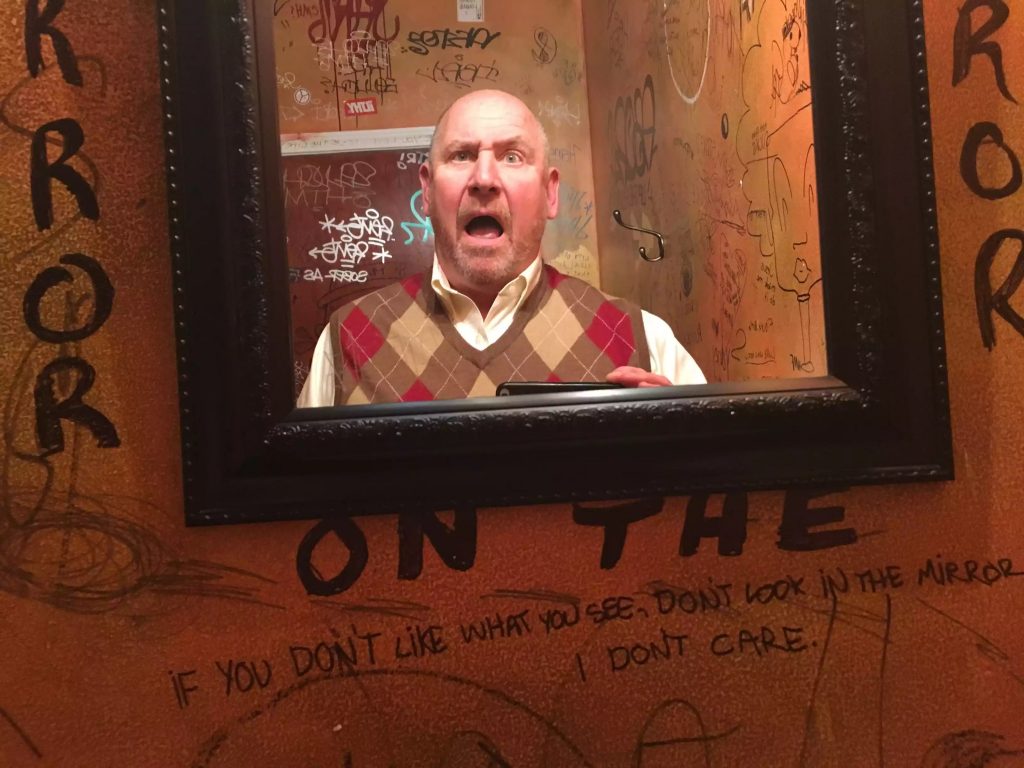
Ohhhhhhhhhhhhhhhhhhhhh
the things this mirror image will yell at you,
YOU’RE UGLY
YOU’RE STUPID
YOU’RE SO DUMB
YOU’RE AN IDIOT
YOU’RE NO GOOD
YOU’RE WORTHLESS
YOU ARE_________________________
and it’s always the
_________________________________
that shouts the loudest
B U T
IT IS NOT TRUE
is what you need to yell
back
L O U D E R
(every time )
I’m very ugly
So don’t try to convince me that
I am a very beautiful person
Because at the end of the day
I hate myself in every single way
And I’m not going to lie to myself by saying
There is beauty inside of me that matters
So rest assured I will remind myself
That I am a worthless, terrible person
And nothing you say will make me believe
I still deserve love
Because no matter what
I am not good enough to be loved
And I am in no position to believe that
Beauty does exist within me
Because whenever I look in the mirror I always think
Am I as ugly as people say?
(Now read bottom up)
by Abdullah Shoaib
THERE IS ALWAYS MUCH TO BE SAID
. . .especially when it comes from what we think but can’t always express, but when it comes to
ETHICALLY SPEAKING
maybe
ACTIONS SPEAK LOUDER THAN WORDS
(as they should)
when the question comes up
Maryam Kouchaki, Ph.D., is a professor of management and organizations at Northwestern University’s Kellogg School of Management. Her research focuses on decision making, diversity, and ethics. She helps people who strive to make their careers meaningful and become their best moral selves, and who want to positively contribute to the world through their work. She helps us answer, in short form, just how ethical we think we actually are. . . ?Let’s imagine that you come to our lab at Northwestern University to do a task. You have sets of numbers in front of you, and you are asked to find the two numbers that add up to exactly 10 for each set. For each correct response, you earn 50 cents.

Now, imagine that we tell you that you can score yourself, and then recycle the paper with your responses, which doesn’t have your name on it. All you have to do is turn in a payment slip with your score, and we pay you.
Would you cheat?
When we conducted these types of studies, after participants left, my research assistant actually dug through the recycling and scored everyone. And we often found that everybody basically cheats a little and earns $2 to $3 extra.
Hmmmmmmmmmmmmmmmmmmm. . .
Decades of research point to moral fallibility, that humans are not perfect and are likely to fail in being moral. Everyday people end up violating their own moral values, sometimes unknowingly, and they find numerous ways to rationalize or ignore this behavior. By doing so, they keep their image of themselves as good, honest individuals—so good that the average person thinks they’re more likely to go to heaven than Mother Teresa.
Is there anything to be done about this? First, we need to be aware of all the subtle ways that our moral decisions can be swayed. Then, we can put safeguards in place so we can make better decisions over time—and become better people.
Moral decisions don’t simply come down to a conscious choice to cheat or not. Research has found that certain things consistently influence our choices—whether it’s how we’re feeling or what time of day it is.
In one study, we gave participants the numbers task to complete while listening to anxiety-inducing music from the movie Psycho. In that situation, people are even more likely to exaggerate their performance.
What’s the explanation? Our data suggest that anxiety increases people’s perception of threat, which in turn results in self-interested, unethical behavior. In threatening situations, our brain shifts into a state that facilitates rapid defense mechanisms; our cognitive resources are temporarily diverted so we can quickly respond to the situation and protect ourselves. Because of these self-protective impulses, we are more likely to narrowly focus on our own basic needs and self-interest, rather than being more mindful of ethical principles.
Another factor that matters is time of day. In one study, half of our participants were randomly assigned to do a task in the morning, 8 a.m. to 12 p.m. The other half did it between 2 to 6 p.m. in the afternoon. In this case, we saw more cheating in the afternoon.
This is evidence for people’s inability to regulate their behavior in a tempting situation. The mere experience of everyday living—making decisions, expending physical energy—can reduce our ability to exert self-control as the day progresses. As we become more tired, our morality is compromised.
We’re also heavily influenced by the way people around us behave. We learn vicariously from our peers, our groups, and our leaders. Workplaces can intentionally or unintentionally normalize unethical behavior, which leads to collective corruption. For example, in one paper we showed that the language used by corporations reflects their culture and shapes employees’ behaviors. Specifically, we found that corrupt companies use linguistic obfuscation (language that is difficult to understand) in their values statement, and as a result team members cheat more.
There is other research pointing to even more factors that affect our moral decisions. For example, if people have ambitious goals or have performance pressures, they are more likely to engage in everyday dishonest behavior. These subtle situational forces can swing our moral compass.
Importantly, we often don’t realize the impact of these factors. If I asked you whether you’re more likely to be unethical in the morning or afternoon, you probably wouldn’t think it makes a difference.
In some ways, our brains may be concealing our own dishonesty from us. In another one of my studies, participants who engaged in a task where they had the opportunity to cheat had a much weaker memory of the experience—when and where it happened, how they felt—compared to those who completed a task without the possibility of cheating. This forgetting seems to be one of the psychological tricks that enable us to engage in questionable behavior over time.
Based on Maryam’s research, here are some guidelines to help you make more moral decisions and continue growing and learning as an ethical person.
1. Plan for ethical challenges. Since other people play a significant role in our morality, one place to start is to find an ethics mentor. You can seek guidance from someone inside or outside your organization, someone trustworthy to discuss ethical issues with.
Next, you can also manage other people’s expectations of you—whether directly or indirectly. For example, in one of my studies, participants were less likely to ask someone to lie after receiving an email from them with a moral quotation in the signature (something like “Success without honor is worse than fraud”).
Even just including that type of quotation in your email signature is a type of safeguard, so you are less likely to be asked to do something questionable. In this way, showing your character can help stop moral dilemmas from even arising.
2. Bring awareness to a moral challenge in the moment. There is a lot of evidence of “moral fading,” where we simply don’t pay attention to the moral implications of our decisions. When dilemmas do arise, we have to explicitly look for these moral implications and not narrowly focus on the costs for ourselves. For example, you may be choosing between two products and one might be cheaper, but at the same time you have information that the company is using questionable labor practices. Do you take that into consideration? Do you think about the harm in this context?
Another key is avoiding rationalization. We can be very creative in justifying questionable behavior when there is self-interest involved. We might tell ourselves, “Oh, everyone does this, I’m just following orders, I’m doing this for the greater good, it’s their own fault, they deserve it.”
If you’re aware of these tendencies, you can try three tests to avoid self-deceptive rationalization:
Finally, not rushing the decision is important. In a classic study, Princeton Theological Seminary students were less likely to help a stranger who was lying slumped on the ground when they were facing time pressure to go and deliver a lecture.
The traditional advice for making a decision is to sleep on it—and that is helpful to encourage you to think about decisions more carefully. If possible, you can also consult your company’s organizational policies by reading codes of conduct or calling a hotline.
3. Use reflection to learn from moral challenges. To be ethical doesn’t mean being perfect all the time, but it does mean being dedicated to learning. When you make a mistake, you can reflect in order to learn and do better in the future. To adopt an ethical learning orientation, ask yourself, “What can I do to be a better person?”
Sometimes, the problem is that we treat work as a completely separate realm of life. My research suggests that our tendency to separate personal and professional life—what is called “identity segmentation”—leads us to engage in more questionable behavior because we use a different code of conduct at work and at home. When people have an integrated identity across their professional and personal life, that leads to a sense of authenticity and more ethical decisions.
You can also learn by seeking more feedback and getting input on your moral decisions. This is particularly important because at work, managers tend to give much more feedback on performance mistakes rather than moral lapses. And we’re less likely to ask for feedback about our own ethics at work.
Ultimately, we may also have to assess whether our work is a moral fit. Is this the type of organization or job that is a good fit for you? Is this the industry you want to be part of?
I like to think about work as a “moral laboratory.” At its best, it provides opportunities for you to learn and grow in your job, and become your better self.
 So. . .
So. . .
maybe it’s truly not so much what you say or think. . .
WHAT SHOW YOU
(ethically speaking)
Mary always, gives me, like so many others, the most essential of Moments:
It doesn’t have to be
the blue iris, it could be
weeds in a vacant lot, or a few
small stones; just
pay attention, then patch
a few words together and don’t try
to make them elaborate, this isn’t
a contest but the doorway
into thanks, and a silence in which
another voice may speak.
~ Mary Oliver ~
So here’s the thing about
Moments
We wait for just the right ones
so we’ll never miss them
And in the waiting
We miss them the most
So make sure you look both ways
And especially straight ahead
before stepping out
in the multi-lane traffic
of your life
or you’ll have a moment
that won’t miss you
 When it comes to
When it comes to
M O M E N T S
. . .take one